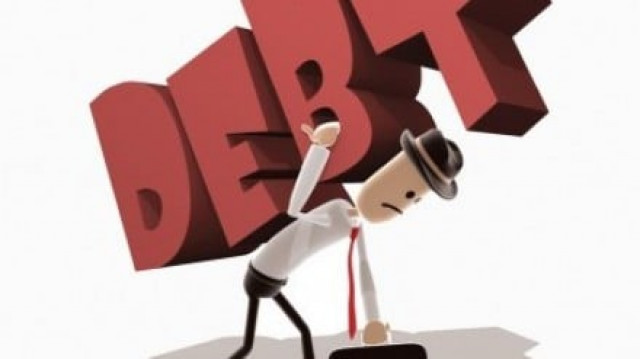Entering the debt danger zone

According to the State Bank of Pakistan’s figures, Islamabad’s external debt stood at $53 billion excluding liabilities till March 2010. The estimates of the International Monetary Fund (IMF) and the Ministry of Finance show that the external debt stock will pile up to $72.6 billion by 2015.
According to the statistics released by the Economic Affairs Division, during the last ten years Pakistan borrowed $27.4 billion from the world. A major chunk of it - $14.2 billion, came from the World Bank and the Asian Development Bank. On the other hand, it paid back $22.5 billion, mainly by borrowing the money from the same sources.
Out of it, $14.8 billion was the principal amount, almost equivalent to what it borrowed from the multilateral donors, and $7.6 billion was interest paid in ten years. Only in 2008-09, an amount of $3.5 billion was spent on external debt servicing. As much as $2.53 billion worth of the principal amount was paid back alongwith $912 million as interest payment.
Pakistan may enter into danger zone by 2012, a year when Islamabad would start paying back $11.3 billion of a relatively expensive loan to the IMF. Independent economic experts believe that in addition to normal debt servicing, which requires about $3 billion per annum, the authorities need another $3 billion just to retire the IMF debt.
The official documents show that Pakistan will pay back $1.2 billion to the IMF in 2012 including $230 million on account of interest payments. The amount is equivalent to 0.7 per cent of the total size of the economy and 5.5 per cent of projected export proceeds. In 2013, the amount will surge to $2.9 billion, which will be 12 per cent of the export proceeds and 1.5 per cent of the GDP.
In 2014, an amount of $4.3 billion would be returned to the IMF, which is 16 per cent of the exports proceeds and 2 per cent of the total size of the economy. It is the year when the next general elections would be held and an immediate worry of the new economic managers would be how to arrange over $4 billion to retire only the IMF debt.
In 2015, $2.6 billion would be paid back to the IMF, which would be 9 per cent of exports proceeds and 1.1 per cent of the GDP. The good news is that in 2016 Pakistan will get rid of the IMF loan by paying back the last tranche of $430 million. The worst is still to come, as from 2017 Pakistan will start paying back the rescheduled $8.9 billion loan of the Paris Club.
The loan was rescheduled in 2002 as a reward of becoming an ally of the United States of America in the war on terror. The worrisome question for the policy makers is that from where will the amount come to return the loans, as the economy is still not in a position to pay back. The other issue is that more than one-third of the total taxes are being spent on debt and debt servicing.
For the next fiscal year the authorities are contemplating to allocate Rs750 billion for debt servicing whereas the total tax revenue is estimated at Rs1,700 billion. Thirdly, due to heavy spending on debt servicing, defence and civil administration virtually nothing is left in the pocket to spend on development, education and health.
Dr Hafeez Sheikh, Adviser to the Prime Minister on Finance and Revenue, has recently hinted at borrowing more money from the IMF to return the borrowed money. Pakistan has been trapped into a Greece-like debt situation. The European Union member country has recently entered into an agreement with the IMF and the EU to borrow $140 billion to pay back its debts.
The cost of this is deep spending cuts and raise in taxes, which has led to social unrest and three people were burnt alive. Economists have recommended that for the next fiscal year the budget deficit target should not be more than 3.5 per cent. But the federal government is still not taking the job seriously and planning near 5 per cent budget deficit.



















COMMENTS
Comments are moderated and generally will be posted if they are on-topic and not abusive.
For more information, please see our Comments FAQ